
Terek Artillery
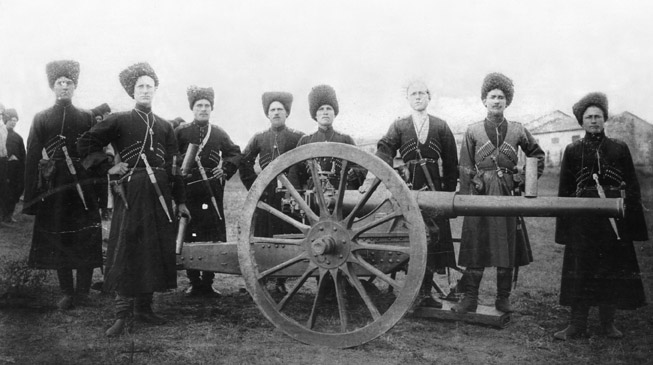
WWI Terek artillerymen, in the traditional uniform. (Wikipedia)
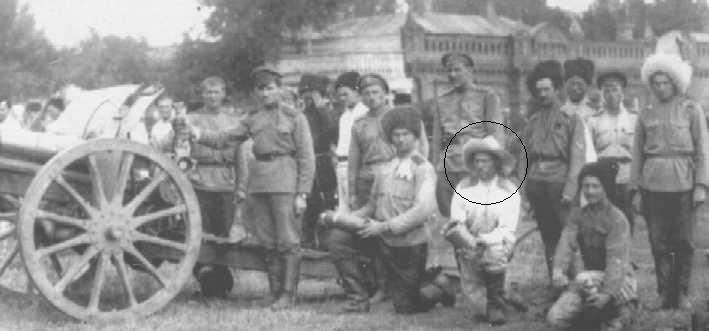
Apparently the 2nd Terek Howitzer Battery during the Civil War. Many of the crew appear to be wearing coloured trousers. The circled hat is noted by Mamontov as being worn by Terek cavalry in summer. Note also the man on the extreme right wearing a small sheep on his head! (Photoalbum)
1st Terek Howitzer Battery and 2nd Terek Horse Artillery Battery
The Cossack mounted divisions and brigades were generally accompanied by horse artillery.
Likewise infantry divisions in the Civil War generally had some integral artillery, though often attached from other parts of the army.
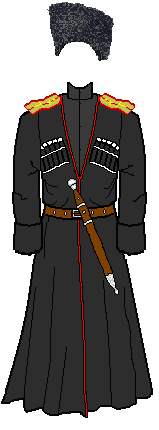 |
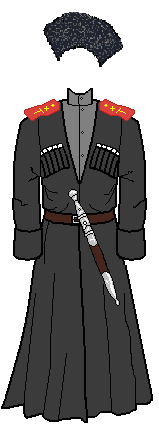 |
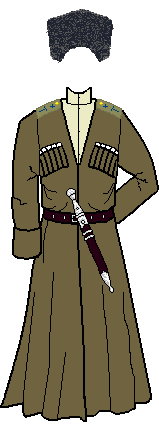 |
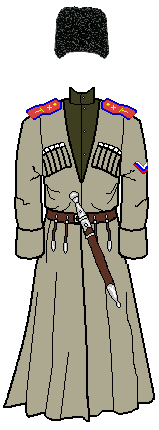 |
| Officer in dress uniform: foot artillery | Gunner: foot artillery | Gunner: field shoulderboards | Gunner: horse artillery |
The formal Terek artillery uniform was basically the same as for the cavalry and plastoons, except that distinctions were in branch of service colours, not the Host colour.
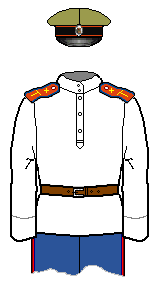 In practice many of the "Cossack" artillerymen were drafted in from non-Cossack areas in the Civil War, as the Whites tended to have a surplus of artillerymen while the Cossacks had a shortage.
In practice many of the "Cossack" artillerymen were drafted in from non-Cossack areas in the Civil War, as the Whites tended to have a surplus of artillerymen while the Cossacks had a shortage.
Mamontov's battery served in mid-1919 as the artillery of the 1st Terek Cossack Division, and during this time the unit managed to acquire enough fabric to give themselves white shirts and the traditional blue trousers of horse artillery.
Most batteries were not so elegantly attired, and would be clad more or less entirely in standard khaki artillery uniforms.
In general painting Terek artillery crews in non-Cossack Russian uniforms is perfectly accurate.
Uniform Details
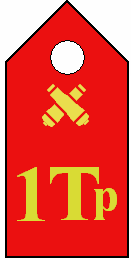 |
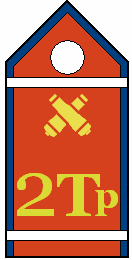 |
 |
|---|---|---|
| Shoulderboards: Gunner 1st Kuban Battery | Shoulderboards: Bombardier Observer 2nd Kuban Horse Battery | Shenk shows this for Terek foot artillery. |
Cossack artillery in most respects had normal artillery markings. The shoulderboards were scarlet, piped with blue if they were horse artillery. Lettering for rankers was in yellow. Buttons and all officer distinctions were in gold. Like all artillery, crossed cannons were placed above the cipher.
The only variation from normal artillery was that the khaki versions of the shoulderboards had the cipher stenciled on in Cossack dark blue.
The cipher gave the battery number and Тр. (Shenk shows only the T, but the Handbook and diorama.ru agree otherwise.)
Information on the colour of papakha tops is almost entirely absent. Shenk appears to show black for Terek artillery with red crosses, trimmed with gold for officers. As black with red trim were the colours of artillery furazhka bands and greatcoat tabs, this seems quite likely. There would also be khaki field issue ones, with a white cross for officers.
History
The 1st Terek Howitzer Battery was attached to the 1st Terek Plastoon Brigade in the middle of 1919. The plastoons still had two howitzers in a battery in October, but it was now the 1st Caucasian Howitzer Battery as part of the 1st Caucasian Plastoon Artillery Divizion (along with 3 mountain guns in the 1st Caucasian Plastoon Mountain Battery). As likely as not, the howitzer battery had just been renamed.
The 2nd Terek Horse Artillery Battery was part of the 1st Terek Horse Artillery Divizion, along with the 1st Horse-Mountain Battery and the 3rd Horse Battery. They were attached to the 1st Terek Cossack Division for the second half of 1919 at least.
Flags
Most battery HQs would have had a flag, generally a simple affair.
For horse artillery it was probably in the style of sotnia flags. For example this was the flag of Mamontov's battery when it was attached to the 1st Terek Cossack Division in early 1919.
